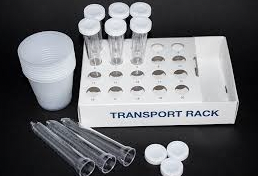Urinary Tract Infections (UTIs) are a prevalent health issue affecting women, and accurate diagnostic tests are essential for effective treatment. The quality of the urine sample collected greatly influences the reliability of UTI tests.
Recent advancements in the design of urine collection containers have significantly improved the accuracy and reliability of these tests. These enhanced containers are specifically engineered to minimize contamination, preserve the integrity of the urine sample, and simplify the collection process.
This is crucial for avoiding incorrect results such as false negatives or positives. With these improved containers, healthcare providers can achieve more precise diagnoses, leading to more appropriate and effective treatments.
Ultimately, these innovations in urine collection technology represent a substantial improvement in patient care. They make the UTI testing process quicker, more efficient, and more comfortable for patients, thus enhancing the overall diagnostic approach to managing urinary tract infections.
How Does Synthetic Urine Kit Work?
A synthetic urine drug test kit is designed to mimic the properties of human urine, and it’s used for various purposes, including laboratory testing, equipment calibration, and educational demonstrations. Here’s how a typical synthetic urine kit works:
Composition: Synthetic urine is formulated to match the chemical composition of human urine. It typically contains water, urea, creatinine, potassium chloride, and sometimes uric acid. The pH level and specific gravity are also adjusted to fall within the range of human urine.
Preparation: Synthetic urine is usually provided in powdered form or pre-mixed liquid. For powdered synthetic urine, the user must mix it with water according to the instructions to achieve the correct concentration.
Heating: Human urine is typically warm (around body temperature, 37°C or 98.6°F), so synthetic urine must be heated to this temperature to pass off as real urine when the temperature is tested. Most kits have a heating element or pad that helps bring the synthetic liquid to the correct temperature.
Delivery System: The kit might include a delivery system, such as a bottle with a temperature strip, a tube, or even a prosthetic device, to allow for discreet and accurate urine dispensing in situations where this might be necessary.
Usage: Once prepared and heated, synthetic urine can be used as needed, whether for testing or other applications.
What Are The Different Types Of Drug Tests?
Drug tests are commonly used in various settings, such as workplaces, sports, rehabilitation centers, and law enforcement, to detect the presence of illicit substances in a person’s system. There are several types of drug tests, each with its specific applications and advantages. Here are the main types:
Urine Test: This is the most common type of drug test. It involves analyzing a urine sample for drugs or their metabolites. It’s relatively inexpensive and noninvasive and can detect drugs used within the past few days to weeks, depending on the substance.
Blood Test: Blood tests are very accurate and can detect the presence of drugs and their exact concentration in the bloodstream. They are more invasive and expensive than urine tests and are typically used in medical settings or for legal purposes.
Saliva Test: An oral fluid test or mouth swab drug test involves collecting saliva to detect drug use. Saliva tests are easy to administer and less invasive and can detect drugs used within the last few hours to a few days. They are becoming more common for roadside testing and employment screenings.
Hair Follicle Test: This test analyzes a small hair sample for drug metabolites. Hair testing can detect drug use over a longer period, typically up to 90 days, depending on the length of the hair. It is more expensive and used in contexts where a long detection period is beneficial, such as in legal cases or for certain employment verifications.
Sweat Test: Sweat tests involve using a patch that the individual wears on their skin for an extended period (usually one to two weeks). The patch absorbs sweat and can be tested for drug metabolites. This type of testing is less common and is sometimes used in judicial settings, particularly for monitoring drug use over time.
Breathalyzer Test: Primarily used to detect alcohol levels, breathalyzers are a form of drug test that measures the amount of alcohol in the breath. Law enforcement commonly uses this test during traffic stops to assess impairment.
What Type Of Container Should Be Used For Collection If The Patient Has A UTI?
When collecting a urine sample from a patient with a urinary tract infection (UTI), it is crucial to use a sterile container to avoid contamination of the sample, which could interfere with diagnostic testing. This is particularly important in distinguishing genuine medical samples from those potentially tampered with, such as using a fake pee kit to pass a drug test. Here are the guidelines for the type of container and the process:
Sterile Specimen Container: Always use a new, sterile, leak-proof container. These containers are usually made of plastic and come sealed to ensure sterility until opened for use.
Midstream “Clean-Catch” Technique: Patients should be instructed on how to collect a midstream urine sample. This technique helps to minimize contamination from the skin and external genitalia. The process involves:
- Cleaning the genital area before urination.
- Beginning to urinate, then stopping the stream.
- The collection container is placed in the stream to catch the urine midstream.
- Avoid touching the inside of the container or the lid.
Labeling: Ensure that the container is properly labeled with the patient’s information, including name, date of birth, and the date and time of collection. This is crucial for accurate processing and diagnosis.
Transport and Storage: The collected sample should be transported to the laboratory immediately. If there is a delay, it may need to be refrigerated to preserve the sample’s integrity, depending on the tests to be performed.
Benefits Of Better Urine Collection Containers For UTI Tests
Improving urine collection containers for UTI tests can offer several benefits, enhancing the accuracy and efficiency of diagnosing urinary tract infections. Here are some of the key advantages:
Reduced Contamination: Better-designed containers can help minimize the risk of contamination from external bacteria, which is particularly critical for UTI testing. This leads to more accurate results, as the urine sample reflects the true microbial state of the urinary tract rather than contaminants from the environment or the skin.
Ease of Use: Containers that are easier to handle, especially for individuals with mobility issues or those who are not familiar with medical procedures, can improve the likelihood of correct sample collection. Features like wider openings, clear labeling, and ergonomic designs can help patients collect their samples more effectively and comfortably.
Leak-Proof and Secure: High-quality containers with secure lids prevent leakage during transport, which is essential for maintaining the integrity of the sample and ensuring the safety and cleanliness of the transport environment.
Integrated Testing Features: Some modern containers might integrate features that allow immediate testing or preservation of the sample, such as built-in temperature strips or chemical preservatives. This can be particularly useful for samples that must be transported over long distances or stored for extended periods before testing.
Cost-Effectiveness: While higher-quality containers may be more expensive initially, they can reduce the need for retesting due to contaminated or lost samples. This can lower healthcare costs by streamlining the diagnostic process and reducing the time needed for appropriate treatment.
Improved Patient Comfort and Satisfaction: Using user-friendly collection containers can enhance the patient experience, reducing the stress and discomfort often associated with providing a sample. This can be especially important in settings like pediatric care, elder care, or for those with disabilities.
Better Infection Control: By using sterile, single-use containers, healthcare settings can better adhere to infection control standards, reducing the risk of cross-contamination among patients and healthcare workers.
Conclusion: Which UTI Test Container Is Best?
The development of better urine collection containers marks a significant advancement in diagnosing and managing urinary tract infections (UTIs). These improved containers are crucial for reducing contamination, ensuring sample integrity, and simplifying the collection process. By minimizing external bacteria and contamination, the enhanced containers provide more accurate and reliable test results, critical for effective diagnosis and treatment. Additionally, their user-friendly design improves patient comfort and compliance during the collection process, making the testing experience less invasive and stressful. Ultimately, these advancements lead to quicker, more efficient diagnoses and enhance overall patient care, demonstrating a significant step forward in UTI management.
















